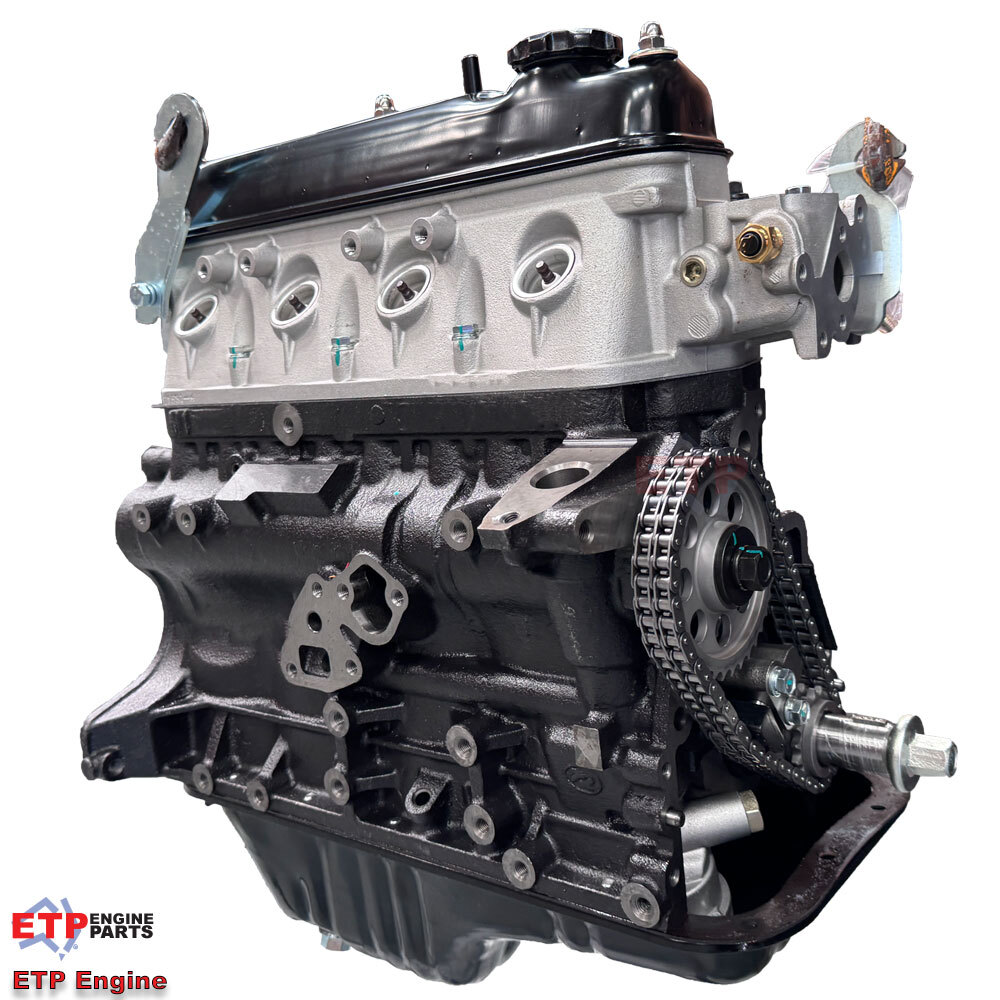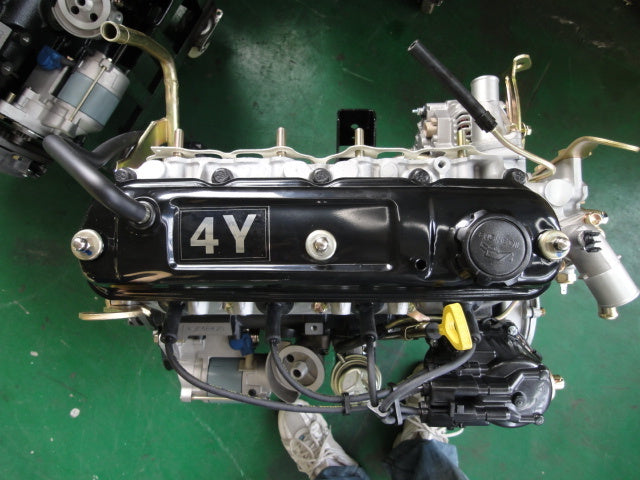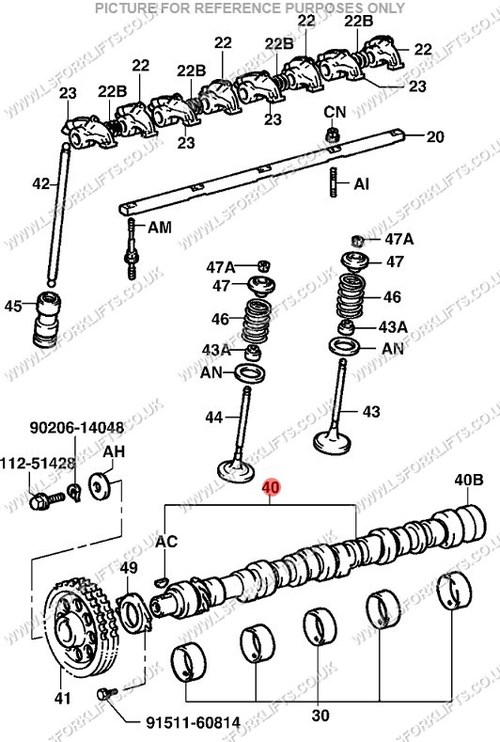The History and Evolution of the 4Y Engine in Automotive Engineering
The History and Evolution of the 4Y Engine in Automotive Engineering
Blog Article
Why the Engine Is the very best Choice for Performance and Effectiveness in Your Cars And Truck
The engine remains a critical element in vehicle layout, primarily due to its considerable influence on both performance and effectiveness. As improvements in modern technology make it possible for smaller sized engines to deliver amazing power while maximizing gas economy, the integration of features such as turbocharging and hybrid systems becomes increasingly vital.
Understanding Engine Types
Comprehending the different kinds of engines is vital for enhancing efficiency and effectiveness in automobile design. The primary engine types include internal combustion engines (ICE), electrical engines, and crossbreed systems, each offering unique advantages and limitations.
Internal burning engines, which can be additional categorized right into gas and diesel variations, rely upon the combustion of gas to create power. Gas engines normally offer greater RPMs and much better velocity, while diesel motor are known for their torque and fuel effectiveness, making them perfect for durable applications.
Electric engines, on the other hand, make use of electric motors powered by batteries or fuel cells. They supply immediate torque shipment, resulting in smooth velocity and reduced exhausts. The effectiveness of electric engines is dramatically greater than that of ICEs, making them a popular selection for eco-conscious consumers.
Hybrid systems integrate both inner burning and electric engines, leveraging the staminas of both technologies. They maximize fuel intake by utilizing electrical power at lower speeds and switching over to gas or diesel for greater speeds or larger tons.
Picking the best engine kind is vital for attaining preferred efficiency metrics and ecological sustainability in contemporary auto design.
The Influence of Engine Dimension
Engine dimension regularly plays a critical duty in figuring out an automobile's performance and performance. Generally determined in litres or cubic centimeters, engine size straight influences the power output and torque qualities of an automobile. Bigger engines usually generate more horsepower, allowing better acceleration and higher full throttle. This is particularly beneficial in applications calling for durable efficiency, such as cars and sturdy trucks.
Nevertheless, enhanced engine size usually correlates with lessened gas efficiency. Smaller sized engines can supply appropriate performance for day-to-day driving while advertising better performance, making them a preferred option in mid-size and portable cars.
Additionally, advancements in engine layout, such as turbocharging and direct gas injection, allow smaller engines to achieve power levels comparable to their larger equivalents. This trend stresses the value of not entirely concentrating on engine dimension but additionally thinking about overall automobile design and modern technology (4y engine). Ultimately, the effect of engine dimension on efficiency and performance highlights the demand for consumers to assess their specific driving preferences and requirements when selecting an automobile
Advanced Engine Technologies
Advancements in engine technologies have substantially reshaped the landscape of automobile efficiency and performance, building upon the fundamental ideas developed by engine dimension. Especially, developments such as turbocharging and direct gas shot have made it possible for smaller sized engines to deliver power degrees formerly related to larger equivalents. Turbochargers compress air getting in the engine, permitting boosted power result without an equivalent rise in engine dimension, while direct shot maximizes gas delivery, enhancing combustion efficiency.
Furthermore, variable valve timing systems have become a vital innovation, enabling engines to change shutoff operation based on driving conditions. This adaptability improves both efficiency throughout acceleration and gas performance throughout travelling. Hybrid and electric engine technologies even more illustrate the shift in vehicle layout, incorporating typical inner burning engines with electric motors to maximize efficiency while lowering exhausts.
Moreover, improvements in materials science have actually brought about lighter, a lot more resilient engine components, further boosting performance and longevity. The assimilation of sophisticated electronic devices and engine control units additionally permits real-time adjustments, ensuring optimum performance throughout different conditions. Jointly, these advanced engine technologies not just improve lorry performance yet likewise contribute to a much more sustainable vehicle future, demonstrating the recurring development of engine design.
Harmonizing Power and Efficiency
Striking an equilibrium between power and effectiveness is essential in modern-day automobile layout as makers seek to meet progressively rigid discharges laws while satisfying customer need for performance (4y engine). The obstacle lies in maximizing engine qualities to supply robust power outcome without giving up fuel economic climate
To attain this balance, engineers use various approaches, such as turbocharging, which enhances engine power by requiring in even more air, permitting a smaller engine displacement that boosts gas effectiveness. Variable shutoff timing modern technologies also play a considerable duty, enabling engines to adjust their performance attributes based upon driving problems, thereby improving both power and effectiveness.
In addition, improvements in products and making strategies have led to lighter engine elements, which decrease general automobile weight and boost gas performance without endangering power. Hybrid technologies have also emerged as a practical service, integrating conventional interior combustion engines with electric click for info powertrains to supply an increase in efficiency while preserving reduced discharges.

Future Trends in Engine Layout

Furthermore, the growth of sophisticated products, such as high-strength alloys and lightweight compounds, is set to reinvent engine parts. These materials not just lower weight but additionally improve thermal effectiveness, thereby enhancing efficiency. Furthermore, suppliers are exploring variable compression proportions, permitting engines to adapt to various driving problems, enhancing both power outcome and gas economy.
Additionally, the surge of expert system and equipment knowing site here in engine style is making it possible for predictive maintenance and real-time performance optimization. This modern technology can lead to engines that self-adjust for maximum effectiveness based upon driving patterns.

Verdict
In conclusion, the engine acts as a critical part in achieving optimal performance and effectiveness in contemporary automobiles. Advanced modern technologies, such as turbocharging and crossbreed systems, boost power result while minimizing gas usage and exhausts. The interplay in between engine size and style proceeds to develop, driving developments that balance electrifying efficiency with ecological sustainability. As auto design advances, the learn this here now concentrate on creating reliable, effective engines will certainly stay vital in shaping the future of transportation.
Furthermore, advancements in engine layout, such as turbocharging and straight fuel shot, enable smaller sized engines to attain power levels equivalent to their bigger counterparts.Developments in engine technologies have actually substantially reshaped the landscape of auto performance and efficiency, structure upon the foundational principles established by engine dimension. Turbochargers press air entering the engine, permitting for boosted power output without an equivalent boost in engine dimension, while direct shot enhances gas shipment, enhancing combustion efficiency.
Hybrid and electrical engine modern technologies even more highlight the shift in auto design, incorporating conventional inner combustion engines with electrical motors to take full advantage of efficiency while minimizing emissions.
Collectively, these innovative engine technologies not only boost car efficiency yet also add to an extra sustainable vehicle future, showing the recurring evolution of engine style. (4y engine)
Report this page